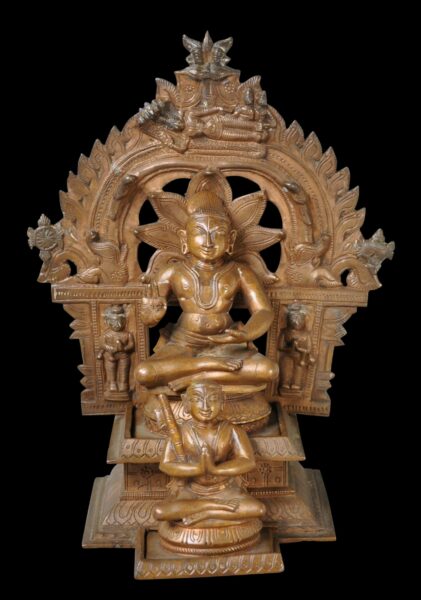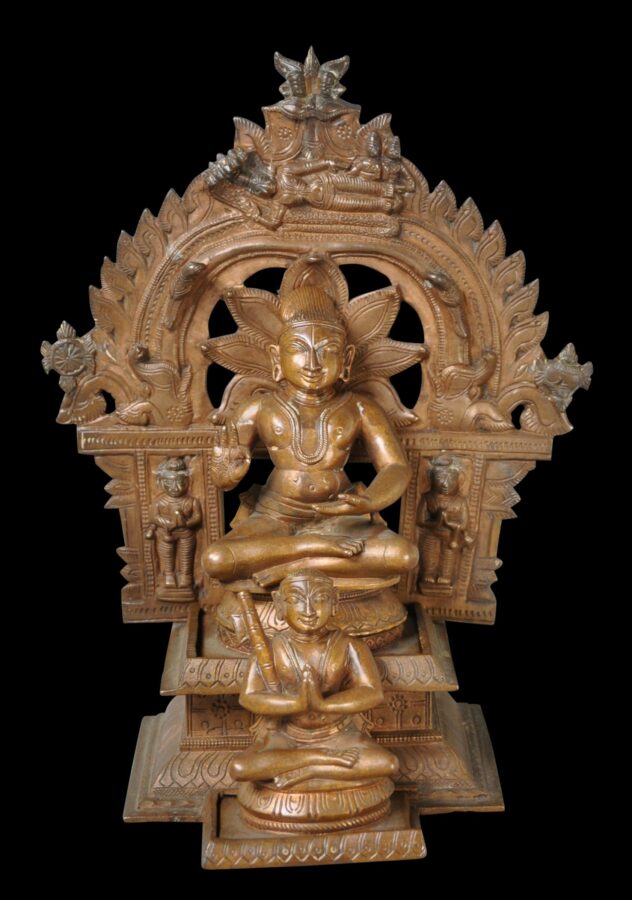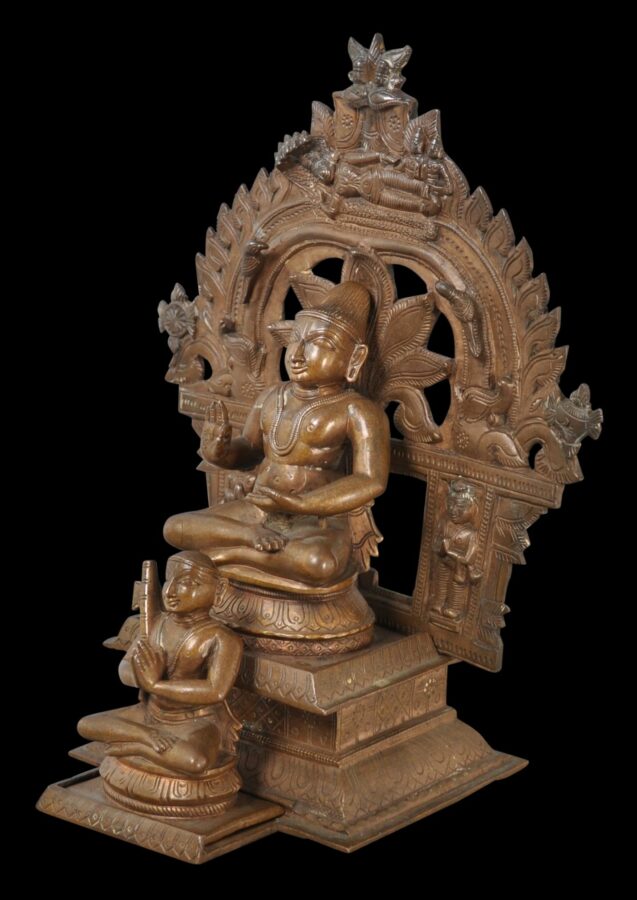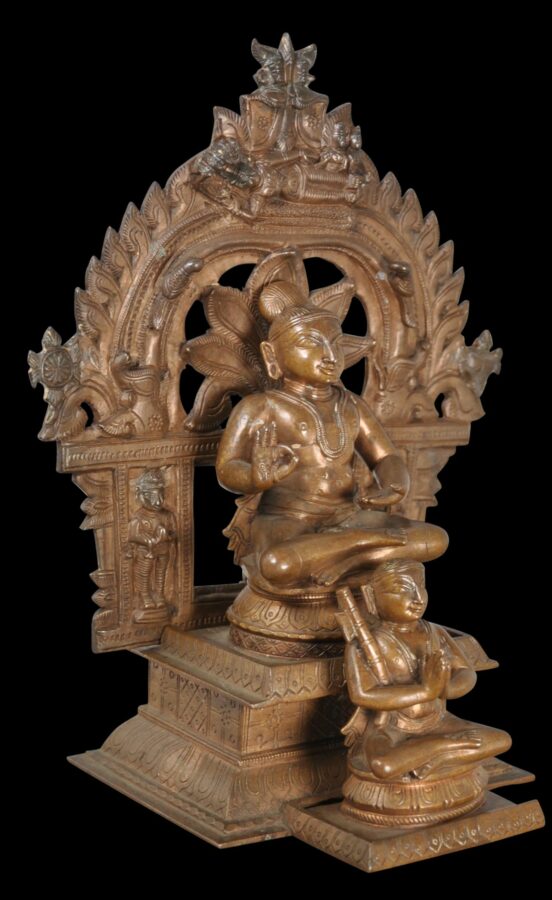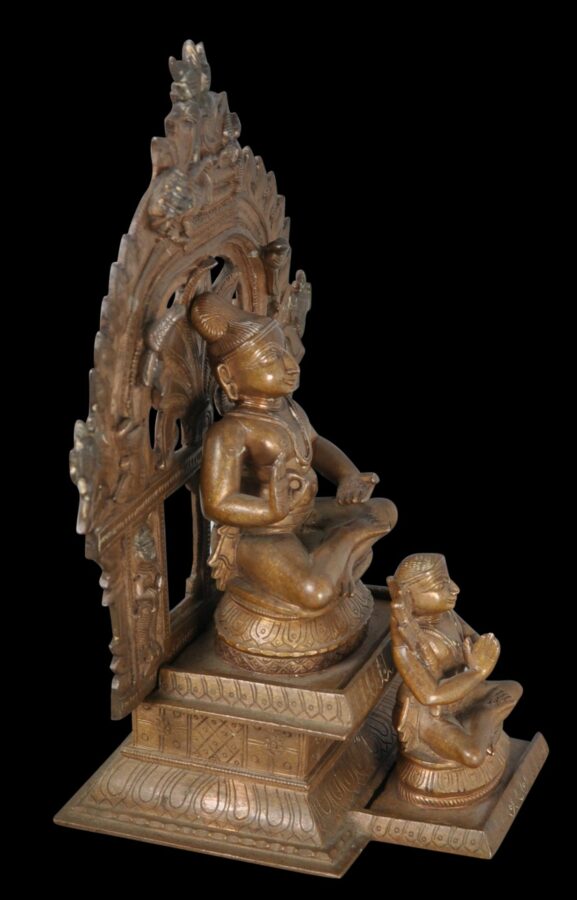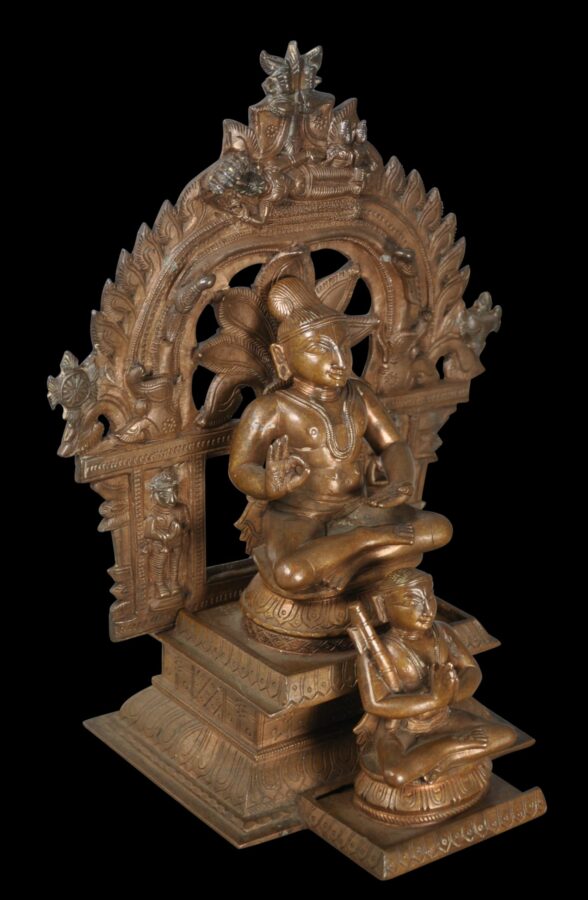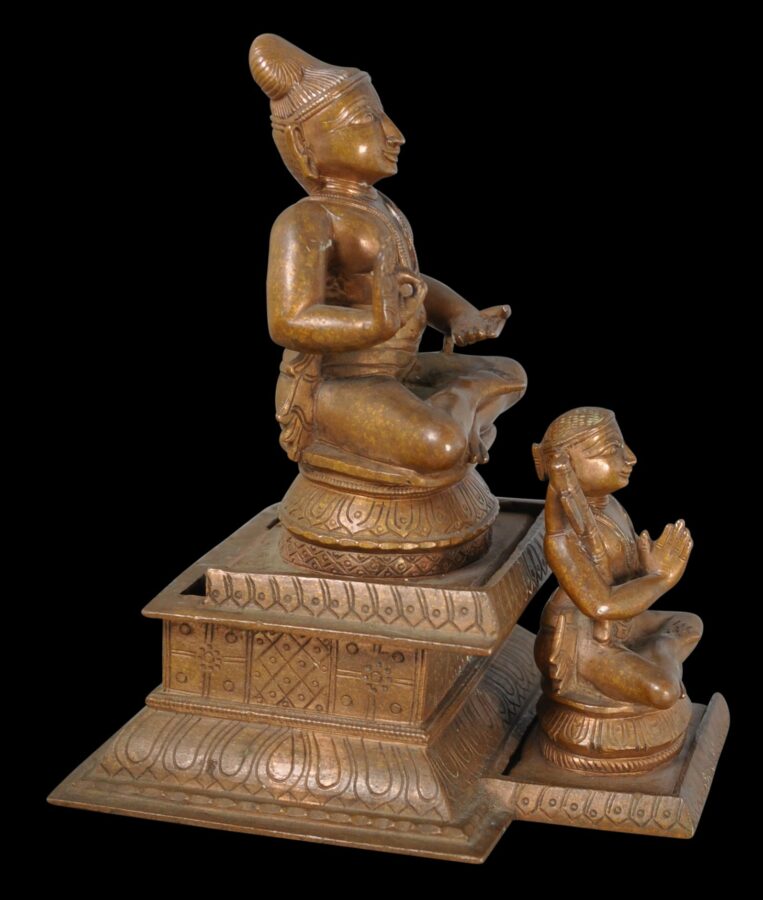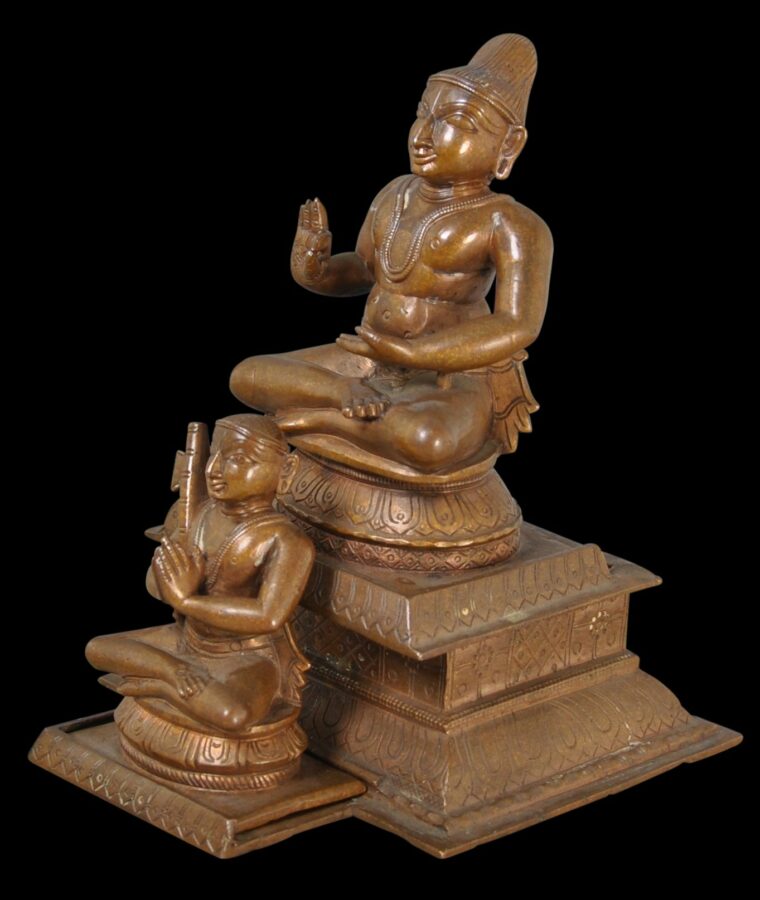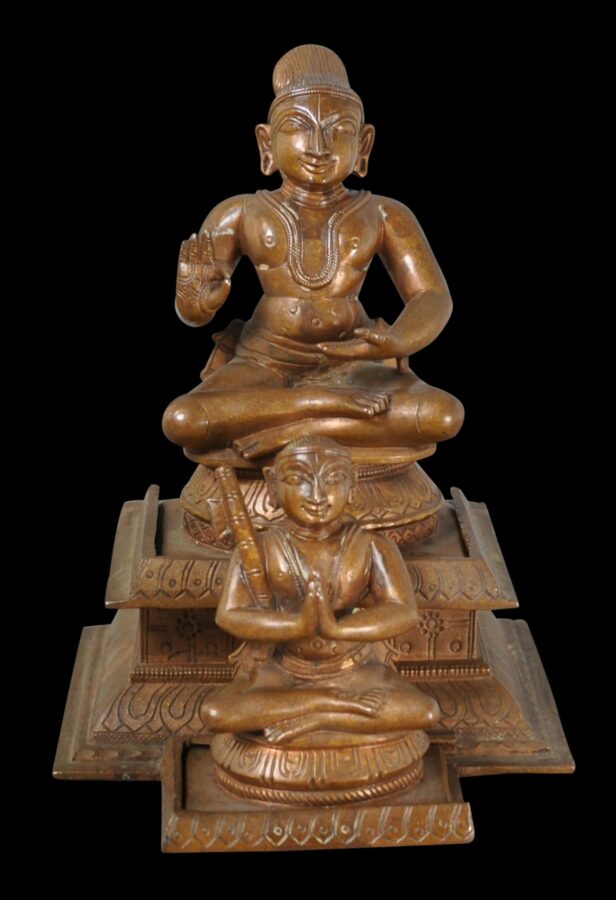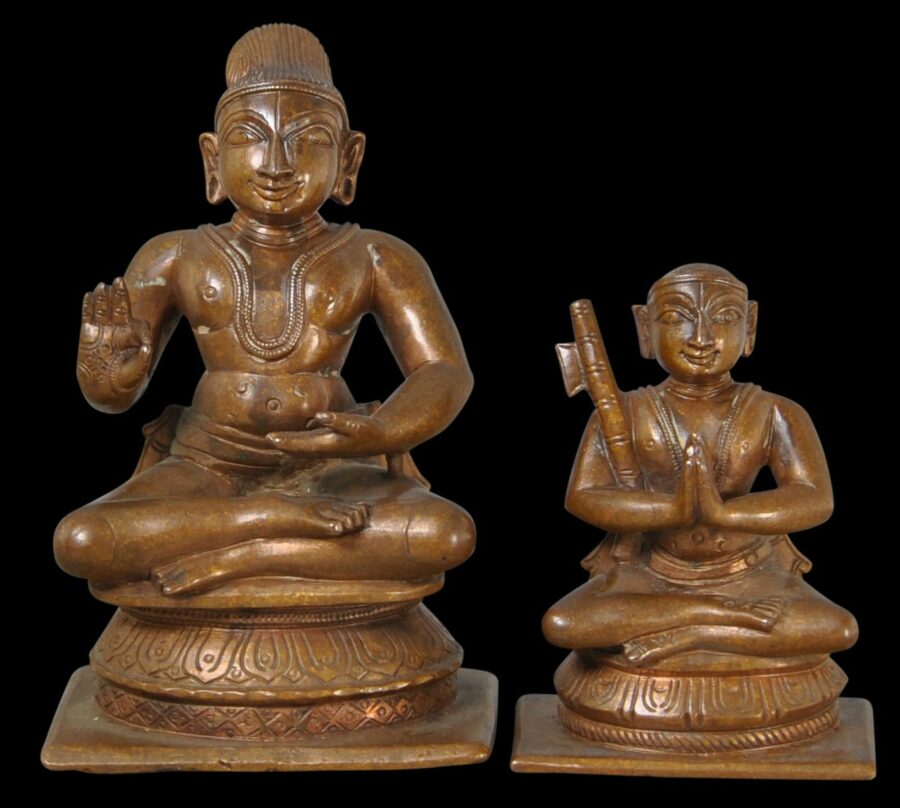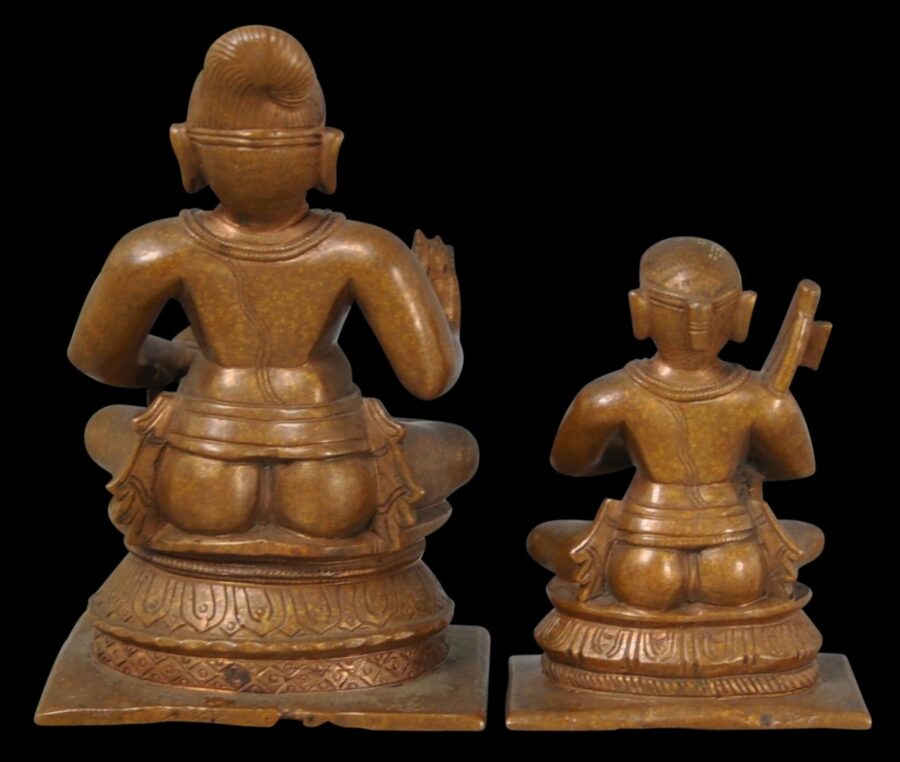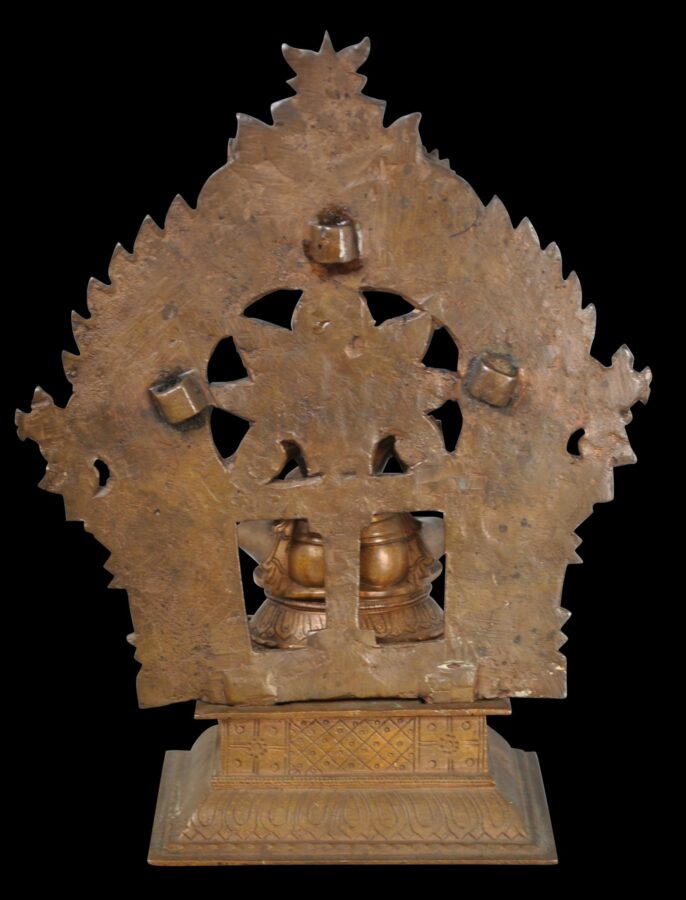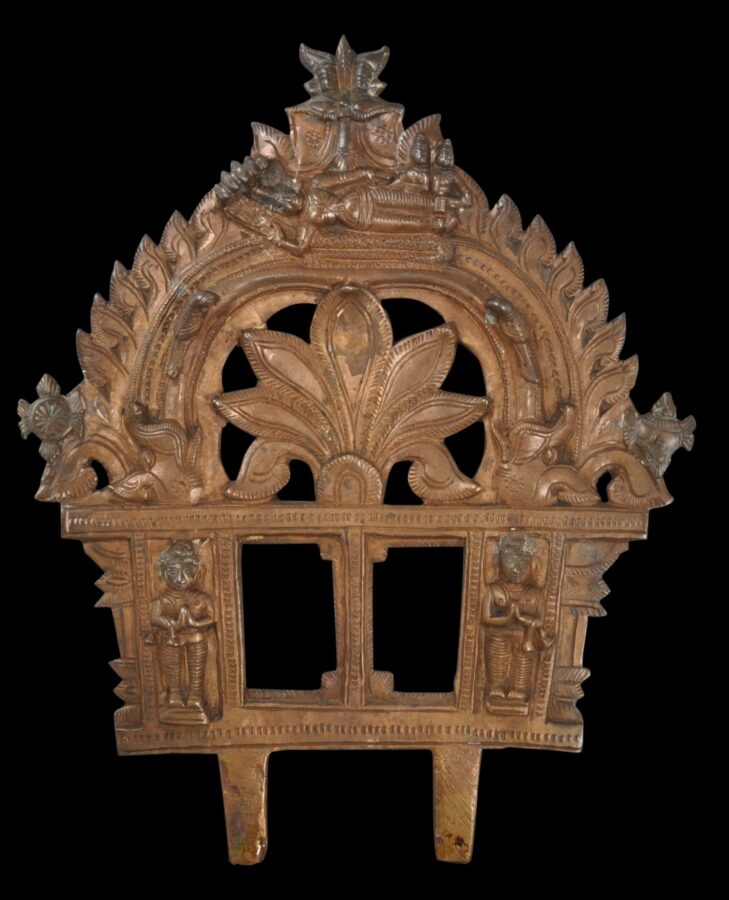This double image ensemble shows the philosopher-saint Nammalvar (seated higher) and Ramanujacharya (seated lower). Both figures have been cast separately and both slot into the base that has been made for them. A flaming aureole or backing plate, also separately cast, is pierced and shows Vishnu at rest beneath a hooded cobra canopy with two consorts, all beneath a protective kurtimukha mask. Also shown on the aureole is a pair of parrots, a cakra wheel and a conch (shanka) – emblems of Vishnu, and two standing devotees with hands folded in anjali mudra.
Both philosopher figures have the tilaka marks on their foreheads to indicate their status as Vaishnavas, or followers of Vishnu.
Ramanujacharya (also known as Ramanuja) was an important 12th century South Indian guru or teacher and philosopher, and in turn Nammalvar was his primary guru.
Nammalvar is shown seated cross-legged on a lotus cushion in a position of dharma-chakra – the teaching position. His face has a benevolent countenance. He is shown largely naked other than for a waist band and a double mala necklace. His hair is piled high in the style of an ascetic; the strands of hair are finely delineated.
Ramanujacharya is shown seated on a round cushion, with the legs crossed, the head upright, and the hands in anjali mudra in veneration of his lord Vishnu. A staff with a small banner attached rests inside his folded right arm. (This is also interpreted as an axe, symbolising clarity of mind.) He is attired in a similar fashion to his guru. He has a pleasing face with large, benevolent, almond-shaped eyes.
Ramanujacharya was and an important exponent of the Sri Vaishnavism tradition within Hinduism. He provided the bhakti movement with sound philosophical underpinnings and developed many rituals for the benefit of devotees.
Ramanujacharya preached across southern India but is most typically associated with Sriringam in Tanjavur district and Melukote in Karnataka.
A related bronze of Ramanujacharya is in the Victoria & Albert Museum and illustrated in Guy (2007, p. 102).
The ensemble here is complete with a light brown patina. All is complete; there are no losses.
References
Guy, J., Indian Temple Sculpture, V&A Publications, 2007.


